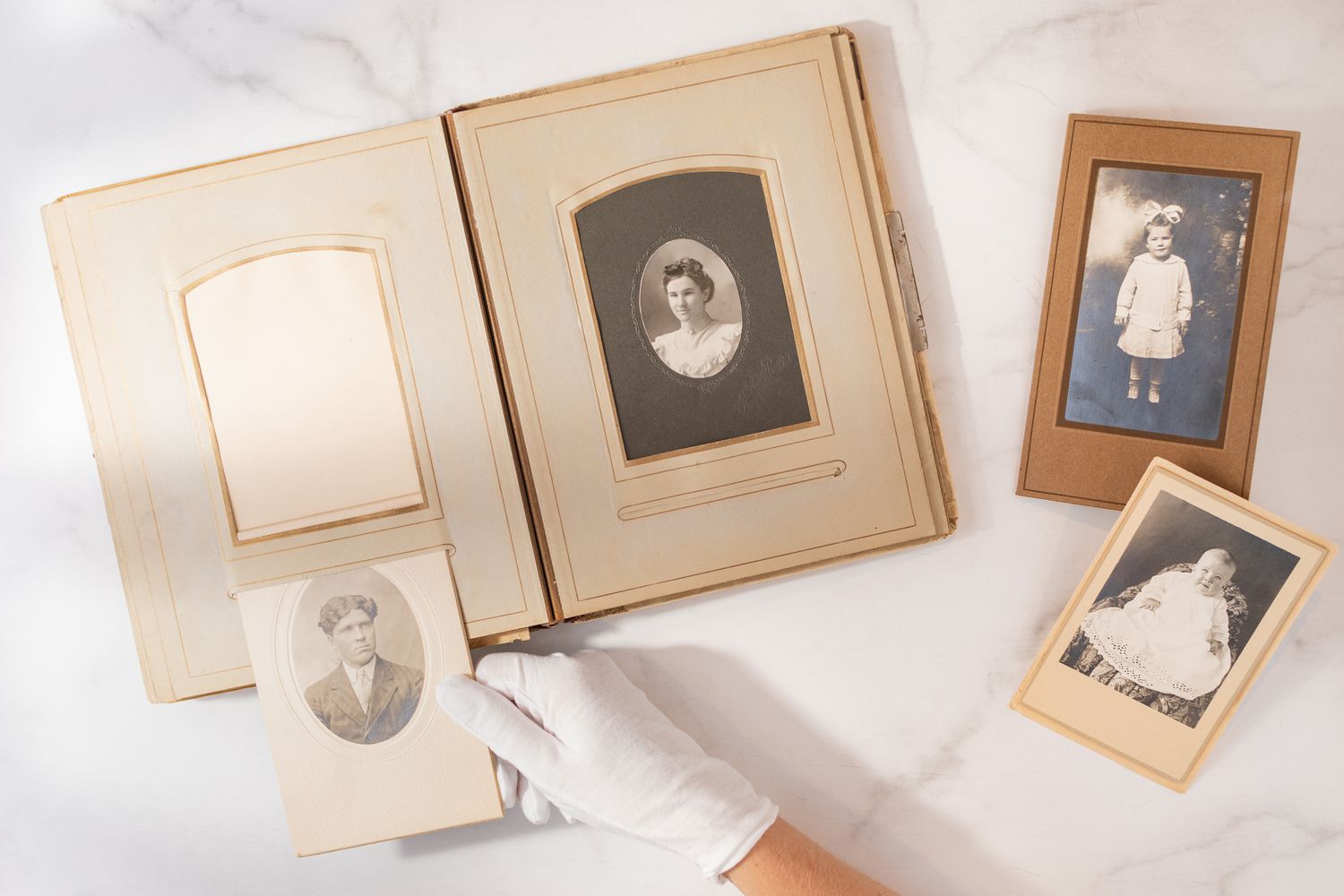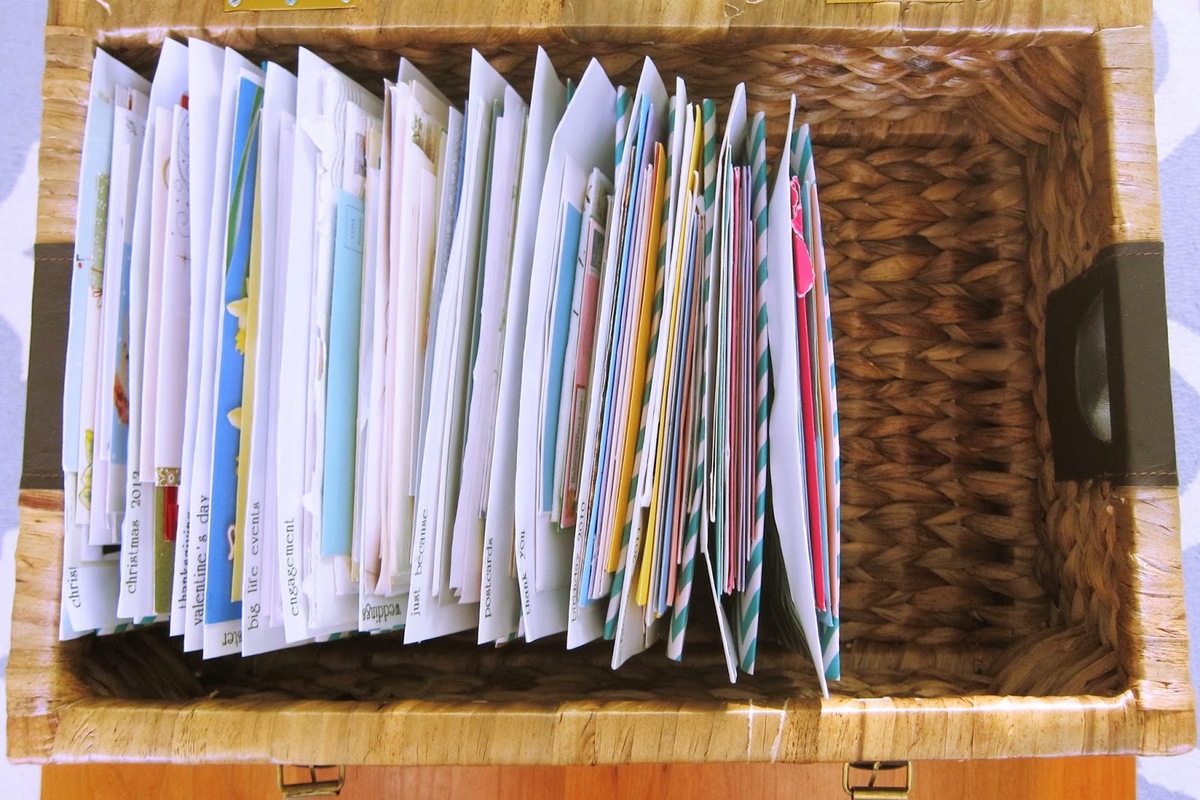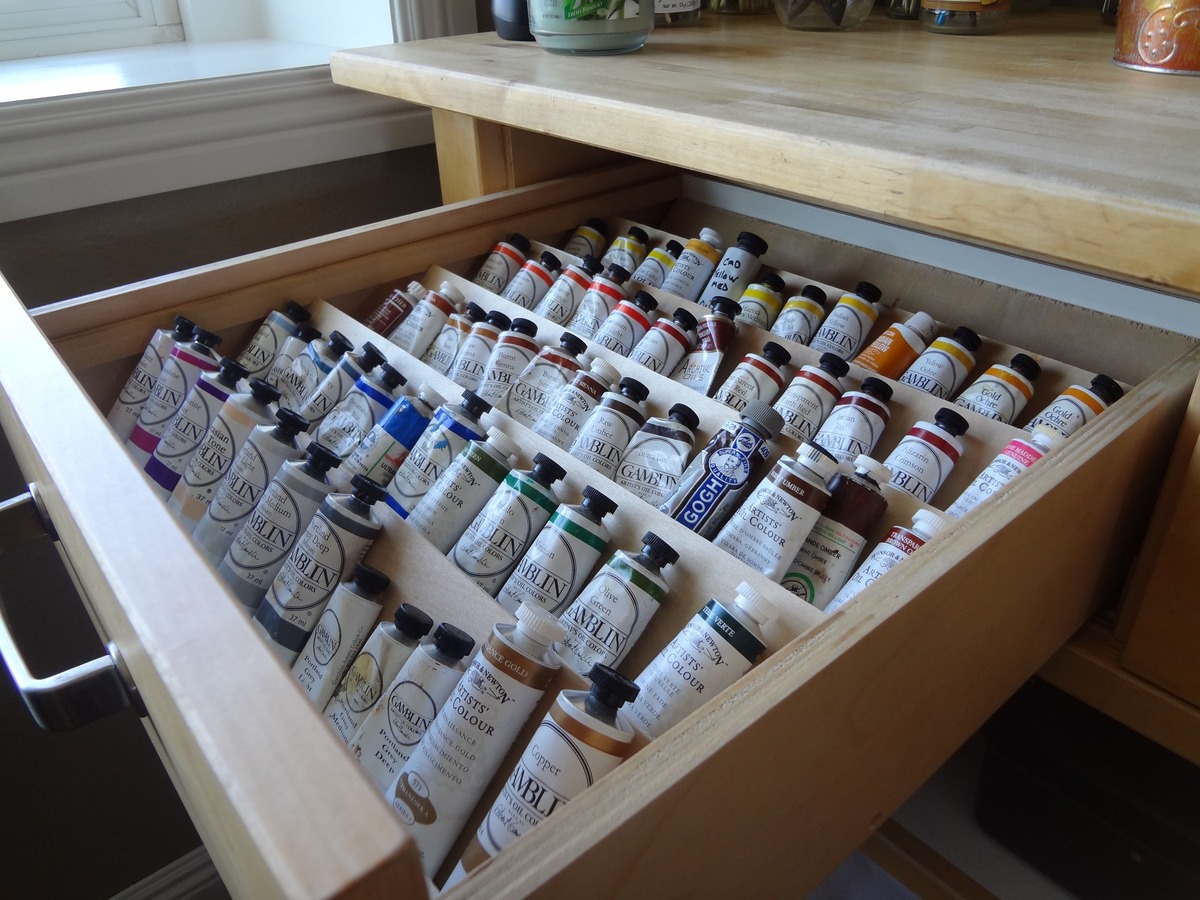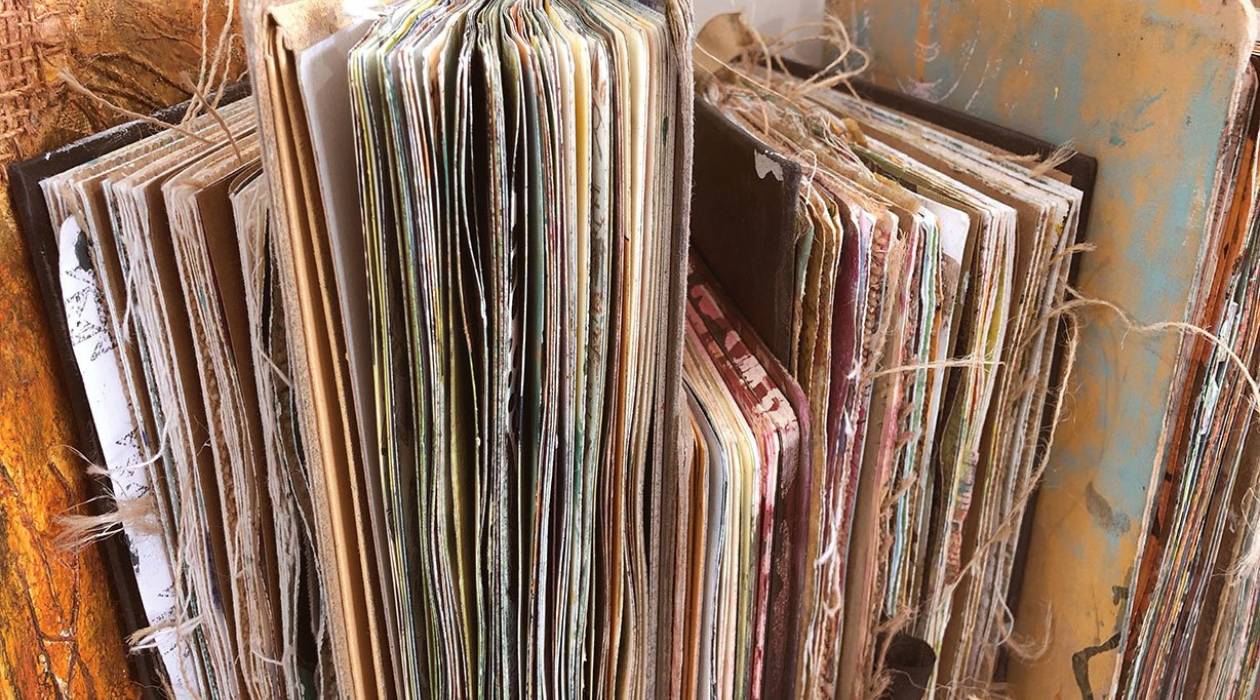

Articles
How To Store Old Photographs
Modified: January 23, 2024
Learn helpful tips and techniques for safely storing and preserving your old photographs with our informative articles. Protect your cherished memories for years to come.
(Many of the links in this article redirect to a specific reviewed product. Your purchase of these products through affiliate links helps to generate commission for Storables.com, at no extra cost. Learn more)
Introduction
Preserving and storing old photographs is not only a way to ensure their longevity, but it is also a way to cherish and preserve our memories. Old photographs hold a sentimental value that cannot be replaced, making it essential to properly store and maintain them.
Whether you have inherited a collection of vintage family photographs or stumbled upon a treasure trove of old snapshots, knowing how to store them correctly is crucial. The right storage techniques can help prevent damage caused by factors such as light, heat, moisture, and improper handling.
In this article, we will explore the importance of proper photograph storage, provide tips for choosing the right environment, offer guidance on handling and care, discuss sorting and organizing options, highlight what not to do, and introduce digital preservation options. By following these recommendations, you can ensure the longevity of your cherished photographs while enjoying them for years to come.
Key Takeaways:
- Proper storage and handling of old photographs is crucial to preserving cherished memories. Protect them from light, humidity, and improper handling to ensure their longevity and safeguard the stories they hold.
- Consider digitizing old photographs for easy access and added protection. Choose reputable digital preservation options and maintain proper organization to ensure these treasured memories are cherished for generations to come.
Read more: How To Photograph Candles
Importance of Proper Storage
Proper storage is crucial for the preservation of old photographs because it helps prevent damage and deterioration over time. Photos are vulnerable to various elements, including light, humidity, temperature fluctuations, and improper handling. By implementing proper storage techniques, you can significantly extend the lifespan of your photographs and protect their quality.
One of the primary threats to photographs is exposure to light. Over time, prolonged exposure to light can cause fading, discoloration, and deterioration of the image. To minimize this risk, store your photos in a dark or dimly lit environment. Avoid displaying them in direct sunlight or under bright artificial lights.
Another factor to consider is humidity. High humidity levels can lead to the growth of mold and mildew, which can irreversibly damage your photographs. Conversely, low humidity can cause the photos to become brittle and prone to cracks. It is recommended to store photographs in a controlled environment with relative humidity between 35% to 55%.
Fluctuations in temperature can also impact the condition of your photographs. Extreme temperatures, whether hot or cold, can cause the photos to warp, fade, or become brittle. Choose a storage location with a stable temperature, ideally between 60°F to 70°F (15°C to 21°C).
Aside from environmental factors, proper handling and care are vital in preserving old photographs. Always handle them with clean, dry hands to avoid transferring oils, dirt, or moisture onto the prints. If possible, use gloves made from archival-grade materials to protect the photos from direct contact.
Furthermore, be mindful of the surfaces you place the photographs on. Acidic materials or adhesives can cause damage and discoloration. Use acid-free and lignin-free archival supplies when storing or displaying your photographs. This includes acid-free photo albums, archival-quality sleeves, and acid-free mounting materials.
By taking the time to store your old photographs properly, you are safeguarding your memories for future generations. Proper storage not only protects the physical integrity of the photographs but also ensures that the stories and emotions captured within them can be cherished and shared for years to come.
Choose the Right Environment
When it comes to storing old photographs, selecting the right environment is crucial for their long-term preservation. Here are some key factors to consider when choosing the storage location for your precious memories:
- Avoid Humidity and Moisture: High humidity levels can promote the growth of mold and mildew, leading to irreversible damage. Choose a storage area that is dry and well-ventilated to minimize the risk of moisture buildup. Avoid basements, attics, and bathrooms, as these areas tend to have higher levels of humidity.
- Control the Temperature: Extreme temperatures can cause photographs to warp, fade, or deteriorate. Aim for a stable temperature range between 60°F to 70°F (15°C to 21°C). Avoid storage areas near heating vents, radiators, or windows where temperature fluctuations are more likely to occur.
- Shield from Light: Exposure to light, especially direct sunlight or bright artificial light, can cause fading and discoloration of photographs over time. Store your photos in a dark or dimly lit area to protect them from damaging UV rays. If you choose to display them, use UV-filtering glass or acrylic frames.
- Keep Away from Chemicals: Some chemicals, such as those found in cleaning agents, can be harmful to photographs. Avoid storing them in close proximity to areas where chemicals are stored or used, such as a laundry room or kitchen. It is also essential to use archival-grade, acid-free storage materials to prevent chemical reactions that could damage the photographs.
- Consider Air Quality: Poor air quality can contribute to the deterioration of photographs. Avoid storing them in areas with smoke, strong odors, or excessive dust. Keep the storage containers clean and free from debris that could potentially harm the photos.
While it may be tempting to display your favorite photographs for everyone to admire, it is important to strike a balance between showcasing your memories and protecting them from potential harm. If you do choose to display them, consider rotating them periodically to minimize prolonged exposure to light and other environmental factors.
By choosing the right environment for storing your old photographs, you can significantly prolong their lifespan and preserve their beauty for generations to come. Remember, these photographs capture cherished moments and stories, and it is our responsibility to ensure their longevity and safeguard the memories they hold.
Handling and Care Tips
Proper handling and care are essential for preserving the quality and longevity of old photographs. Follow these tips to ensure that your precious memories are protected:
- Wash Your Hands: Before handling old photographs, make sure your hands are clean and dry. Wash them thoroughly and avoid using lotions or creams that could transfer oils onto the photos.
- Use Gloves: If possible, wear gloves made of archival-grade materials, such as nitrile or cotton, when handling old photographs. Gloves help prevent the transfer of oils and dirt from your hands onto the photos. Be sure to choose gloves that fit well to maintain dexterity and avoid accidental damage.
- Handle by the Edges: When picking up and moving photographs, always hold them by the edges to minimize contact with the image surface. Avoid touching the front of the photo directly, as the oils from your fingers can cause damage over time.
- Avoid Folding or Creasing: Never fold or crease old photographs, as this can result in permanent damage. If the photos do not fit in your storage containers, use larger envelopes or archival folders instead.
- Store in Acid-Free Sleeves or Archival Enclosures: Place individual photographs in acid-free, archival-quality sleeves or enclosures. These protective materials help shield the photos from dust, debris, and potential chemical interactions.
- Be Mindful of Adhesives: Avoid using adhesive tapes or glue directly on the photographs, as they can cause irreversible damage. If you need to attach photos to a surface, use acid-free photo corners or archival mounting corners that allow for easy removal without harming the images.
- Avoid Lamination: Lamination may seem like a protective measure, but it can actually cause more harm than good. The lamination process uses heat and adhesives that can damage the photographs. Instead, use archival sleeves or frames to protect them.
- Keep Them Flat and Well-Supported: Store photographs flat or in archival-quality albums specifically designed for photo storage. Avoid stacking or piling them on top of each other, as this can result in creasing or scratching. If you must stack them, place a layer of acid-free tissue or archival paper between each photo to provide some cushioning.
- Control Pest Infestations: Protect your photographs from potential damage caused by pests, such as silverfish or rodents. Ensure that your storage area is clean and pest-free. Consider placing pest repellents or traps nearby to prevent infestations.
By following these handling and care tips, you can minimize the risk of damage to your old photographs and ensure their preservation for years to come. Remember, treating these memories with care and respect now will allow future generations to enjoy and cherish them as well.
Store old photographs in acid-free, archival quality photo albums or boxes to protect them from deterioration. Keep them in a cool, dry, and dark environment to prevent fading and damage.
Sorting and Organizing
Sorting and organizing your old photographs is not only a practical way to keep them organized but also a way to preserve their stories and memories for future generations. Here are some tips to help you effectively sort and organize your collection:
- Create Categories: Start by creating categories or themes for your photographs. This could be based on specific events, people, locations, or time periods. Having defined categories will make it easier to locate specific photos when you want to revisit or share them.
- Organize Chronologically: If possible, arrange your photos in chronological order within each category. This will allow you to follow the natural progression of events and see the evolution of people, places, or things over time.
- Label and Caption: Invest in archival-quality pens or markers and label the back of each photograph with relevant information, such as the date, location, people involved, and any other significant details. Consider creating captions or notes that tell the story behind the photo. This will add context and enhance the value of the images.
- Digitize for Easy Access: Consider digitizing your old photographs to ensure easy access and preservation. Scan the photos using a high-resolution scanner and save them in a digital format. This will allow you to share and protect the images while still maintaining the original physical copies.
- Use Photo Albums or Boxes: Store your organized photographs in acid-free photo albums or archival-quality boxes. These storage options will protect the images from dust, light, and physical damage. Make sure the albums or boxes are large enough to accommodate the photos without bending or crowding them.
- Backup Digitized Photos: If you choose to digitize your old photographs, ensure that you have multiple backups. Store the digital files on external hard drives, cloud storage, or specialized archival platforms. Regularly update your backups to prevent loss or corruption.
- Share and Preserve Memories: Consider sharing the organized photos with family members or loved ones. Encourage conversations and storytelling sessions to preserve the memories associated with each photo. This not only strengthens family bonds but also ensures that the stories behind the photographs are passed down through generations.
- Maintain Your Organization: Once you have sorted and organized your old photographs, make an effort to maintain the system. Return photos to their designated places after viewing or sharing them. Regularly review and update your organization as new photos are acquired or as new information becomes available.
Sorting and organizing your old photographs may take some time and effort, but the rewards are invaluable. By creating a system that allows for easy retrieval and preservation, you can ensure that these treasured memories are cherished and enjoyed for years to come.
Read more: How To Photograph Through Glass
What Not to Do
When it comes to preserving and storing old photographs, there are certain practices and actions that should be avoided as they can compromise the integrity and longevity of the images. Here are some “what not to do” tips when it comes to handling and storing your precious photographs:
- Do Not Touch the Photo Surface: Avoid touching the front surface of the photograph, especially with bare hands. The oils and dirt from your skin can lead to smudging, staining, or damage over time.
- Avoid Exposure to Direct Sunlight: Direct sunlight can cause fading and discoloration of photographs. Always avoid displaying or storing your photos in areas exposed to direct sunlight or intense artificial light sources.
- Do Not Use Adhesive Tapes: Regular adhesive tapes, such as cellophane or duct tape, should never be used directly on photographs. These tapes deteriorate over time and can cause irreversible damage to the images. Instead, use archival-safe options like acid-free photo corners or archival mounting materials.
- Avoid Laminating Photographs: Lamination may seem like a protective measure, but it can actually cause more harm than good. The lamination process uses heat and adhesive, which can damage and alter the photographs. Opt for archival-quality protective sleeves or frames instead.
- Do Not Store Photos in Basements or Attics: Basements and attics are typically more susceptible to temperature and humidity fluctuations, as well as pests. Avoid storing your photographs in these areas to prevent damage from mold, mildew, rodents, and other environmental hazards.
- Do Not Overexpose to Heat: Extreme heat can cause photographs to warp, fade, or become brittle. Avoid storing them near heating vents, radiators, or other sources of heat. It’s important to maintain a stable temperature between 60°F to 70°F (15°C to 21°C).
- Avoid Storing in Plastic Bags or PVC Sleeves: Plastic bags or polyvinyl chloride (PVC) sleeves may seem like a convenient storage option, but they can release harmful gases and chemicals that can damage photographs over time. Opt for acid-free, archival-quality sleeves or enclosures instead.
- Do Not Neglect Dust and Debris: Dust and debris can accumulate on photographs, leading to scratches and degradation. Regularly clean the storage containers and surfaces where the photos are stored to prevent dust buildup.
- Avoid Stacking or Piling Photos: Stacking or piling photographs can result in creasing, bending, or scratching. If you need to stack them, place a layer of acid-free tissue or archival paper between each photo to provide cushioning and protection.
- Do Not Forget to Make Backups: If you choose to digitize your photos, do not forget to create multiple backups and store them in different locations. This will help safeguard your digital copies in case of hardware failure, loss, or damage.
By being mindful of these “what not to do” tips, you can avoid common mistakes and ensure the proper care and preservation of your cherished old photographs. Remember, taking the necessary precautions will help safeguard these memories for future generations to enjoy.
Digital Preservation Options
In this digital age, preserving old photographs in a digital format has become increasingly popular. Digitizing your old photos not only allows for easy access and sharing but also provides an extra layer of protection against physical damage or loss. Here are some digital preservation options to consider:
- Scanning: The most common method of digitizing old photographs is by scanning them. Use a high-resolution scanner to capture the details of the image. Adjust the settings to ensure the best quality possible while maintaining a manageable file size. Save the scanned files in a lossless format such as TIFF or PNG to preserve the original image quality.
- Cloud Storage: Cloud storage services offer a convenient way to store and backup your digital photo collection. Services like Google Drive, Dropbox, and iCloud provide secure storage options with the added benefit of accessibility from various devices. Be sure to choose a reputable service with robust security measures in place.
- External Hard Drives: External hard drives provide a physical backup solution for your digital photographs. They offer large storage capacities and can be easily connected to your computer for file transfer. Choose a reliable and durable hard drive from a reputable brand to ensure the safety of your digital photo collection.
- Archival Media: Archival media, such as DVDs or Blu-ray discs, can be used for long-term storage of your digital photos. These media have a longer lifespan compared to standard recordable discs. However, it is essential to regularly check and transfer the data to new media as technology and storage formats evolve.
- Online Photo Sharing Platforms: Online photo sharing platforms, like Flickr or Instagram, provide a social aspect to preserving and sharing your digital photos. These platforms allow you to create galleries or albums and share them with specific individuals or the public. It’s important to familiarize yourself with the privacy settings and terms of service of the platform you choose.
- Specialized Digital Preservation Services: There are specialized digital preservation services available that offer comprehensive solutions for preserving and organizing your digital photographs. These services often include features such as metadata management, image restoration, tagging, and advanced search capabilities. Research and choose a service that aligns with your specific needs and requirements.
- Metadata and Backups: Regardless of the preservation method you choose, remember to add relevant metadata to your digital photographs. This includes information such as dates, locations, names, and descriptions. Regularly backup your digital photo collection to multiple locations to prevent loss due to hardware failure or unforeseen circumstances.
When digitizing your old photographs, it’s important to balance convenience with data integrity and future-proofing. Keep in mind that technology evolves, so it is essential to regularly review and migrate your digital photo collection to newer storage formats to ensure accessibility in the future.
By preserving your old photographs in a digital format, you can safeguard them against physical damage and loss while making them easily accessible and shareable for generations to come.
Conclusion
Properly storing and preserving old photographs is vital for maintaining the quality and longevity of these cherished memories. By understanding the importance of correct storage techniques, choosing the right environment, and implementing proper handling and care, you can ensure that your precious photographs remain in excellent condition for years to come.
Remember to avoid common mistakes, such as touching the surface of the photographs, exposing them to direct sunlight or extreme temperatures, using harmful adhesives or materials, and neglecting proper organization and labeling. By following best practices, you can protect your photographs from damage and deterioration.
Consider digitizing your old photographs to create convenient backups and facilitate easy sharing. Choose reputable digital preservation options such as scanning, cloud storage, external hard drives, or specialized preservation services to ensure the safety and accessibility of your digital photo collection.
Sorting and organizing your photographs allows you to showcase their stories, making them even more meaningful and easier to share with loved ones. Proper organization, labeling, and the use of archival-quality storage materials will further protect the photographs and enhance their preservation.
In conclusion, preserving and storing old photographs is a way to honor and safeguard our memories and the rich history they represent. By implementing the tips provided in this article, you can ensure that these precious photographs continue to bring joy and evoke emotions for future generations.
Remember, photographs capture fleeting moments that are irreplaceable. By taking the time to preserve, store, and care for old photographs, we preserve our connection to the past and create a lasting legacy for the future.
Frequently Asked Questions about How To Store Old Photographs
Was this page helpful?
At Storables.com, we guarantee accurate and reliable information. Our content, validated by Expert Board Contributors, is crafted following stringent Editorial Policies. We're committed to providing you with well-researched, expert-backed insights for all your informational needs.















0 thoughts on “How To Store Old Photographs”